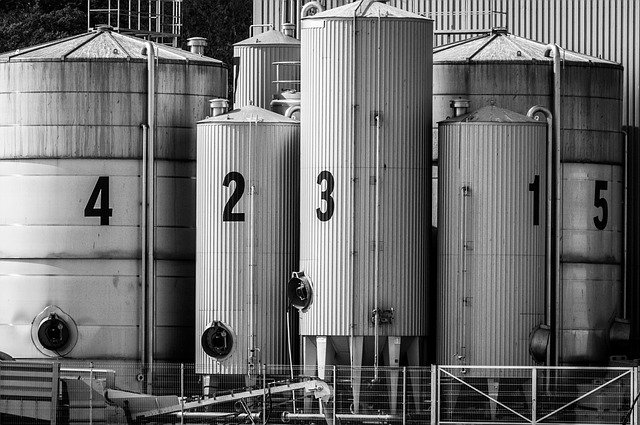Chemical Storage Tanks: Types, Materials, and Safe Practices
Chemical storage tanks are engineered containers designed to hold liquids and solutions used in industrial, agricultural, and municipal processes. Proper selection, installation, and maintenance of these tanks reduce the risk of spills, contamination, and equipment failure. This article explains common tank types, material compatibility, industrial installation considerations, how tanks handle water-based chemicals, and routine inspection and maintenance approaches to support long-term, compliant storage.

What is a chemical container?
A chemical container is any engineered vessel—tank, drum, or tote—intended to hold chemical substances safely. Containers range from small portable drums to large stationary tanks sited at processing plants. Key design factors include chemical compatibility, expected pressure or vacuum conditions, and whether the container will be used for batch or continuous storage. Labels, secondary containment, and fittings for transfer, venting, and monitoring are part of the container design to minimize exposure and environmental release.
How do storage materials differ?
Tank materials commonly include carbon steel, stainless steel, fiberglass-reinforced plastic (FRP), and high-density polyethylene (HDPE). Carbon and stainless steels are used for many solvents and acids when compatible and when temperature and pressure conditions require metal strength. FRP and HDPE are chosen for corrosive or aqueous chemistries where metal corrosion is a concern. Material selection depends on chemical concentration, temperature, and intended service life; consult chemical compatibility data and manufacturer specifications before committing to a material.
What are industrial installation considerations?
Industrial installations must account for foundation, anchoring, spill containment, piping routing, and access for inspection. A properly prepared concrete or compacted base reduces settlement risk, while anchoring can be necessary in seismic or high-wind locations. Secondary containment—dikes or basins sized to local regulatory requirements—protects soil and groundwater. Installations typically include level gauges, vents with flame arrestors where flammable chemicals are present, and monitoring instrumentation. Local services and certified contractors can provide site evaluation, permitting guidance, and installation that meets codes and environmental rules.
How do tanks handle water and aqueous chemicals?
Water and aqueous chemical storage often emphasize corrosion resistance and cleanliness. Materials such as HDPE, FRP, and certain stainless steels are commonly used for water-based and dilute chemical solutions because they resist rust and biological fouling. Tanks intended for potable or process water need smooth, cleanable surfaces and approvals where required. Drainage, overflow protection, and backflow prevention are routine design elements. For tanks holding mixtures of water and reactive chemicals, verify compatibility to prevent degradation, exothermic reactions, or microbial growth.
How to inspect and maintain chemical tanks?
Routine inspection helps detect early signs of wear: corrosion, cracking, leaks at fittings, and degraded gaskets. Visual inspections should be combined with periodic non-destructive testing (ultrasonic thickness measurement, dye penetrant, or pressure testing) for metal tanks, and with scheduled assessments for plastic and FRP shells for crazing or delamination. Maintain valves and vents, replace seals at recommended intervals, and keep records of inspections and repairs. Develop a maintenance schedule aligned with manufacturer guidance and regulatory inspection intervals; training personnel in safe handling and confined space procedures is essential.
Conclusion
Selecting and managing chemical storage tanks requires attention to material compatibility, site-specific installation factors, and ongoing inspection and maintenance. Whether storing water-based solutions or more aggressive reagents, choose tank materials and containment systems that match the chemical properties and operational conditions. Industrial installations benefit from professional assessment and adherence to local codes and environmental regulations. Regular monitoring and documented maintenance extend service life and reduce the likelihood of spills or operational interruptions, supporting safer and more reliable storage.






